Tom's Hardware Verdict
The Deepcool PQ850M achieves good but not competitive overall performance. It is silent though, and it is covered by a long warranty.
Pros
- +
+ Full power at 47 degrees Celsius
- +
+ Tight load regulation at 12V
- +
+ Good build quality
- +
+ Efficient
- +
+ Good enough ripple suppression
- +
+ Silent operation
- +
+ Long hold-up time
- +
+ Low inrush current with 115V
- +
+ Low conducted EMI
- +
+ Fully modular
- +
+ Enough connectors for its capacity
- +
+ Compatible with the alternative sleep mode
- +
+ Compact dimensions
- +
+ 10-year warranty
Cons
- -
Lacks a 12+4 pin (12VHPWR) connector
- -
High inrush current with 230V
- -
Mediocre transient response at 3.3V
- -
Not so efficient 5VSB rail
- -
Small distance between peripheral connectors
- -
Weird exterior design
Why you can trust Tom's Hardware
The Deepcool PQ850M uses a pretty good and reliable Seasonic platform, which has started to show its age, though. Thanks to its terrific CWT platform, the Corsair RM850x (2021) remains the performance king in the 850W Gold category. The weird exterior design of the PQ850 doesn't help, either. Another decent option with similar specs from Deepcool is the DQ850-M-V2L, which achieves better performance than the PQ850M, using a budget CWT platform. A revision of the PQ850M is required, featuring a 12+4 pin connector, to give it a chance for inclusion in our best PSUs article.
Deepcool enriched its PSU lines with the PQ-M series, including four models with 650W to 1000W max power. All are fully modular and use the trendy Seasonic Focus Gold platform. They have compact dimensions and are equipped with a 120mm diameter fluid dynamic bearing fan provided by Hong Hua. The exterior design looks weird because of the square holes of the fan grille. The design definitely stands out from the crowd, but not in a good way, according to our taste, at least.
This review will evaluate the second strongest member of the PQ-M line, the 850W unit, which is strong enough to support a capable gaming system. The PSU doesn't have a 12+4 pin PCIe connector, meaning that it isn't compatible with either the newest ATX spec (v3.0) or upcoming GPUs. It is not ideal to buy a PSU right now because we are in a transition phase from the previous ATX spec to the new one.
The only graphics card, so far at least, that comes with a 12+4 pin PCIe connector is the Nvidia RTX 3090 Ti, and it has an adapter from three 6+2 PCIe to a single 12+4 PCIe. Still, you need the PSU to be as future-proof as possible, and the upcoming GPUs will utilize the extra 4-pins so that adapters won't be fully compatible.
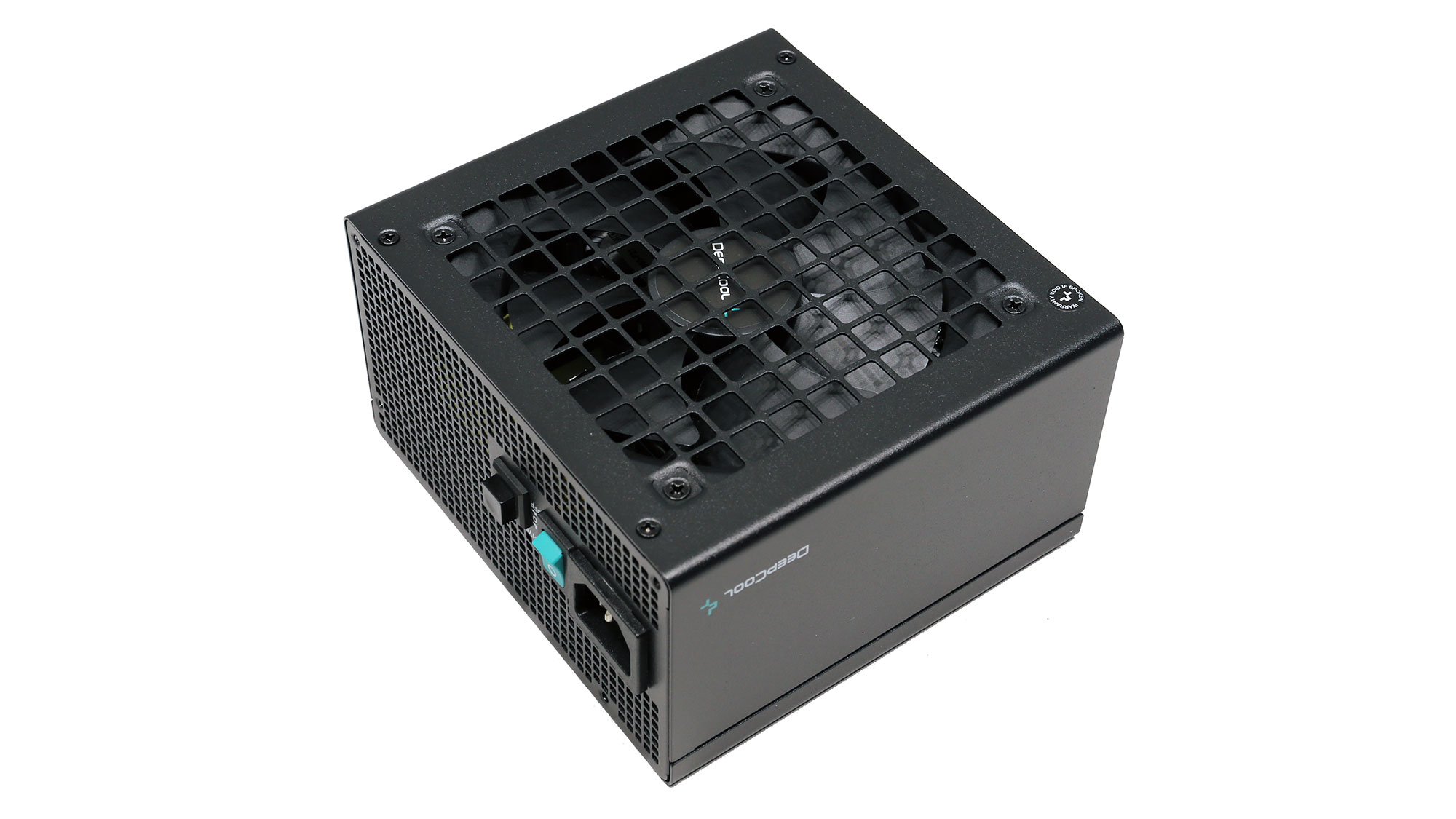



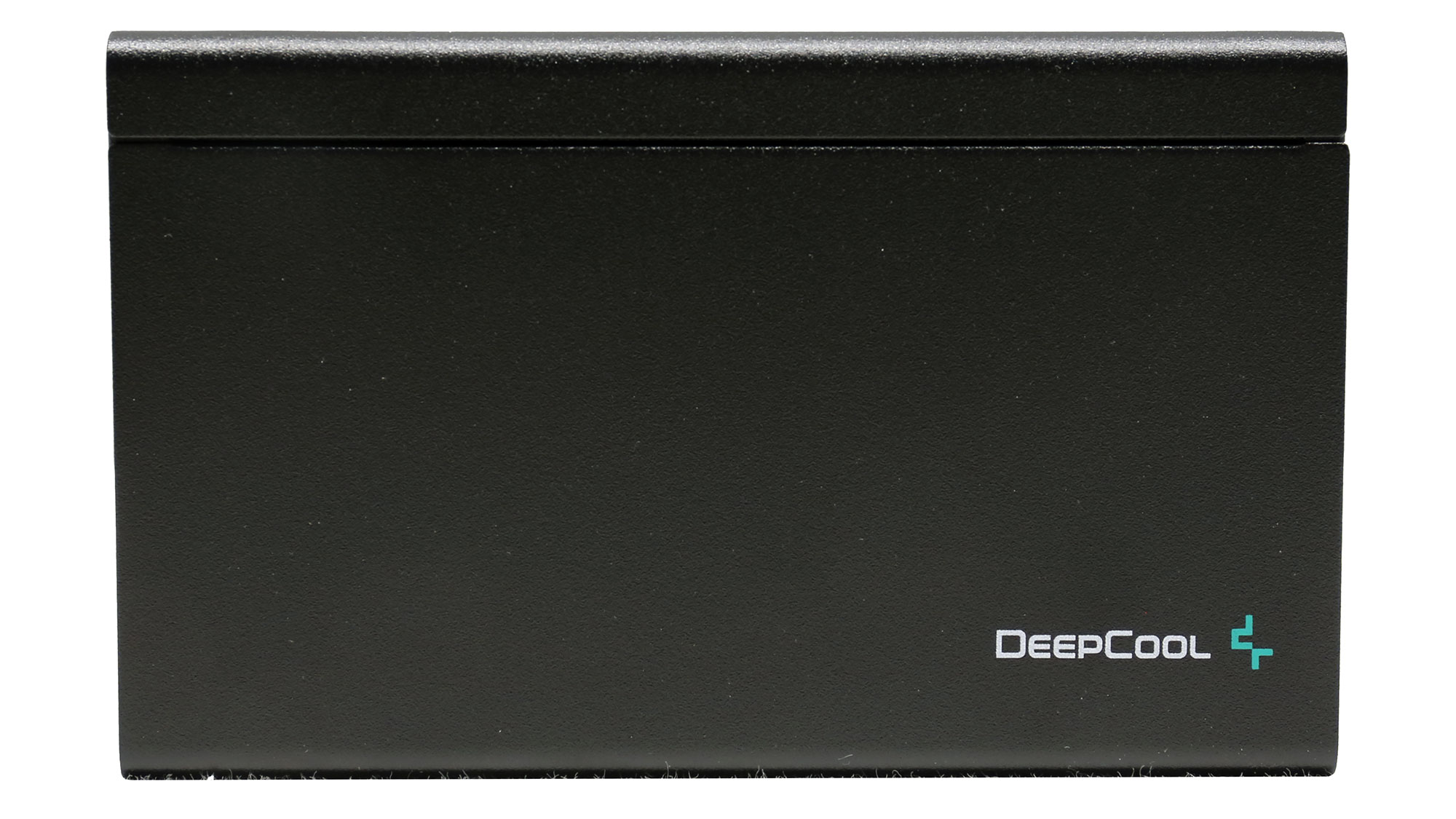



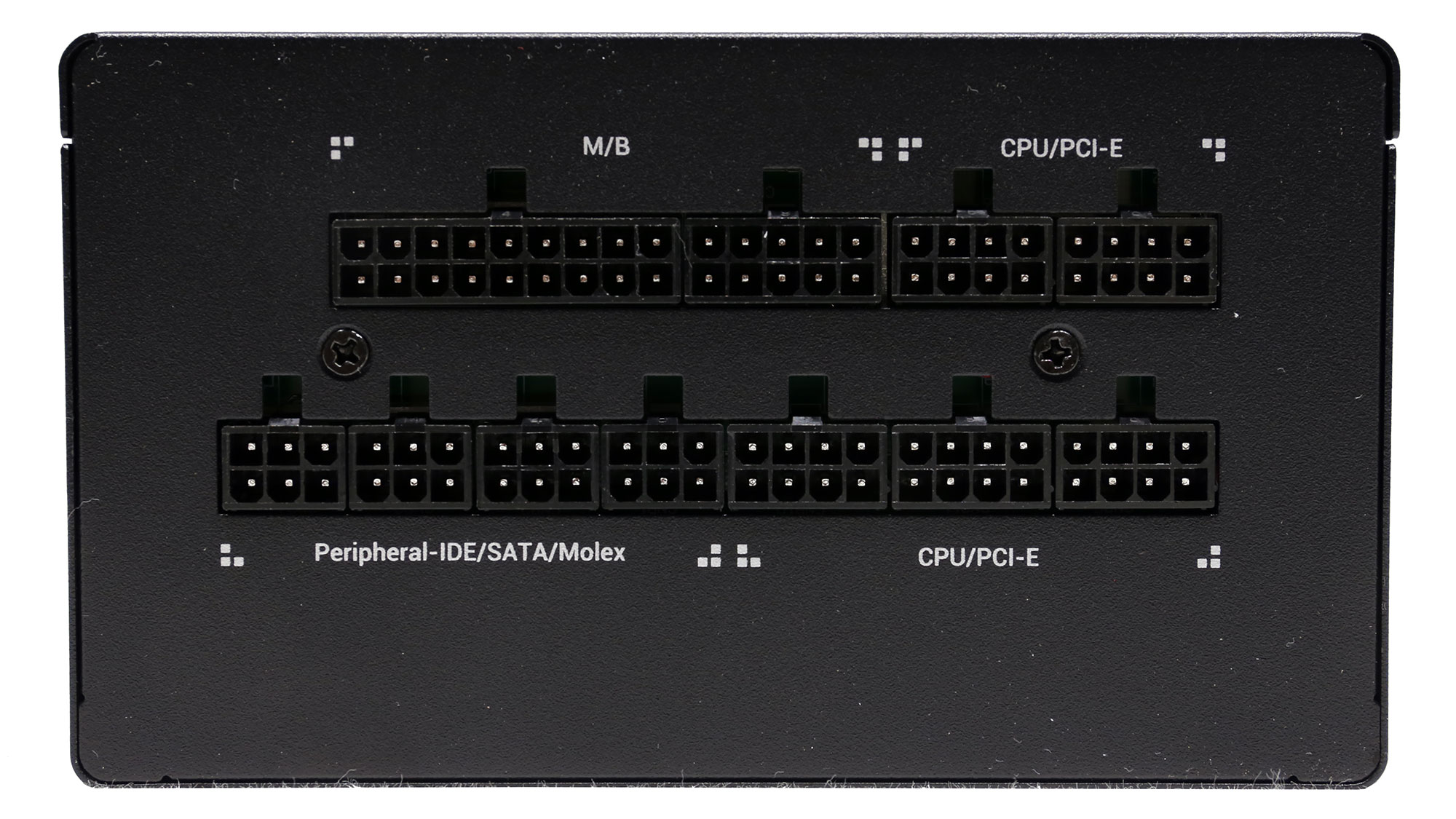



An extended, ten-year warranty covers the PQ850M, and its MSRP is set at 169 dollars, which is a fair amount given its features. It is certified as Gold by 80 PLUS and Platinum by Cybenetics. It also has a noise rating of Cybenetics A- (25-30 dB[A]).







Specifications
|
Manufacturer (OEM) |
Seasonic |
|
Max. DC Output |
850W |
| Efficiency | 80 PLUS Gold, Cybenetics Gold (87-89%) |
|
Noise | Cybenetics A- (25-30 dB[A]) |
|
Modular |
✓ (fully) |
|
Intel C6/C7 Power State Support |
✓ |
|
Operating Temperature (Continuous Full Load) | 0 - 40°C |
|
Over Voltage Protection |
✓ |
|
Under Voltage Protection |
✓ |
|
Over Power Protection |
✓ |
|
Over Current (+12V) Protection |
✓ |
|
Over Temperature Protection |
✓ |
|
Short Circuit Protection |
✓ |
|
Surge Protection |
✓ |
|
Inrush Current Protection |
✓ |
|
Fan Failure Protection |
✗ |
|
No Load Operation |
✓ |
|
Cooling |
135mm Fluid Dynamic Bearing Fan (HA13525M12F-Z) |
|
Semi-Passive Operation |
✓ (selectable) |
|
Dimensions (W x H x D) |
150 x 85 x 140mm |
|
Weight |
1.7 kg (3.75 lb) |
|
Form Factor |
ATX12V v2.53, EPS 2.92 |
|
Warranty |
10 Years |
Power Specifications
| Rail | Row 0 - Cell 1 | 3.3V | 5V | 12V | 5VSB | -12V |
| Max. Power | Amps | 20 | 20 | 70 | 3 | 0.3 |
| Watts | Row 2 - Cell 1 | Row 2 - Cell 2 | 100 | 840 | 15 | 3.6 |
| Total Max. Power (W) | Row 3 - Cell 1 | Row 3 - Cell 2 | 850 | Row 3 - Cell 4 | Row 3 - Cell 5 | Row 3 - Cell 6 |
Cables & Connectors
| Description | Cable Count | Connector Count (Total) | Gauge | In Cable Capacitors |
|---|---|---|---|---|
| ATX connector 20+4 pin (610mm) | 1 | 1 | 18AWG | No |
| 4+4 pin EPS12V (660mm) | 2 | 2 | 18AWG | No |
| 6+2 pin PCIe (760mm) | 3 | 3 | 18AWG | No |
| SATA (460mm+120mm+120mm+120mm) | 2 | 8 | 18AWG | No |
| SATA (450mm+120mm) / 4-pin Molex (+120mm+120mm) | 1 | 2 / 2 | 18AWG | No |
| 4-pin Molex (450mm+120mm+120mm) | 1 | 3 | 18AWG | No |
| AC Power Cord (1370mm) - C13 coupler | 1 | 1 | 18AWG | - |
The only three PCIe connectors are on dedicated cables, so this PSU can even power an RTX 3090 Ti, using the provided adapter. Given that it is not wise to use PCIe cables with more than one connector and that SLI and Crossfire are long dead, there is no need for more than three PCIe connectors on dedicated cables in an 850W PSU.
There are no in-cable caps, and all cables are long enough. If only the distance between the peripheral connectors was longer, at 150mm, at least. Finally, it would be nice to see thicker gauges on the ATX, EPS, and PCIe connectors.
Get Tom's Hardware's best news and in-depth reviews, straight to your inbox.
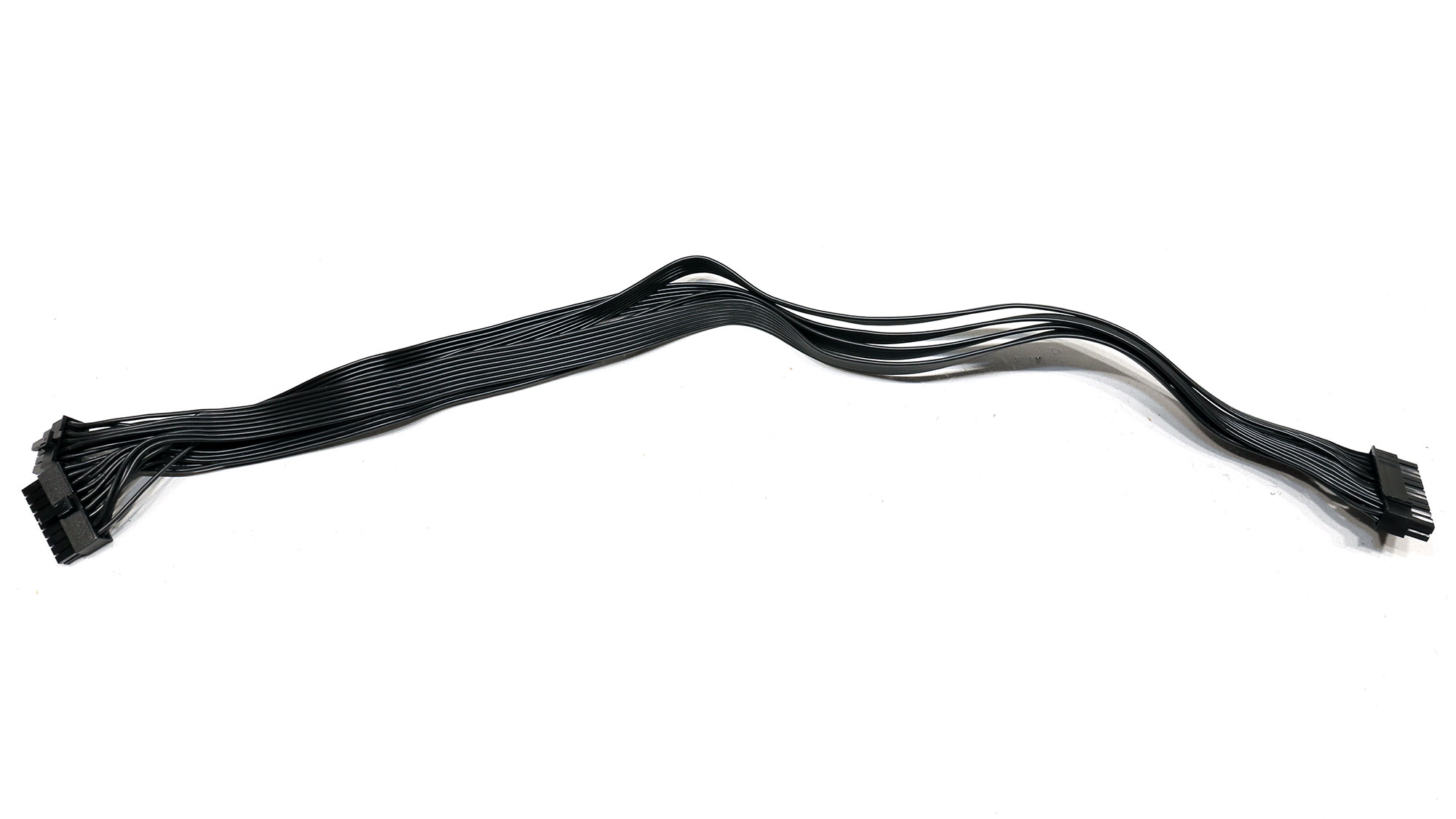


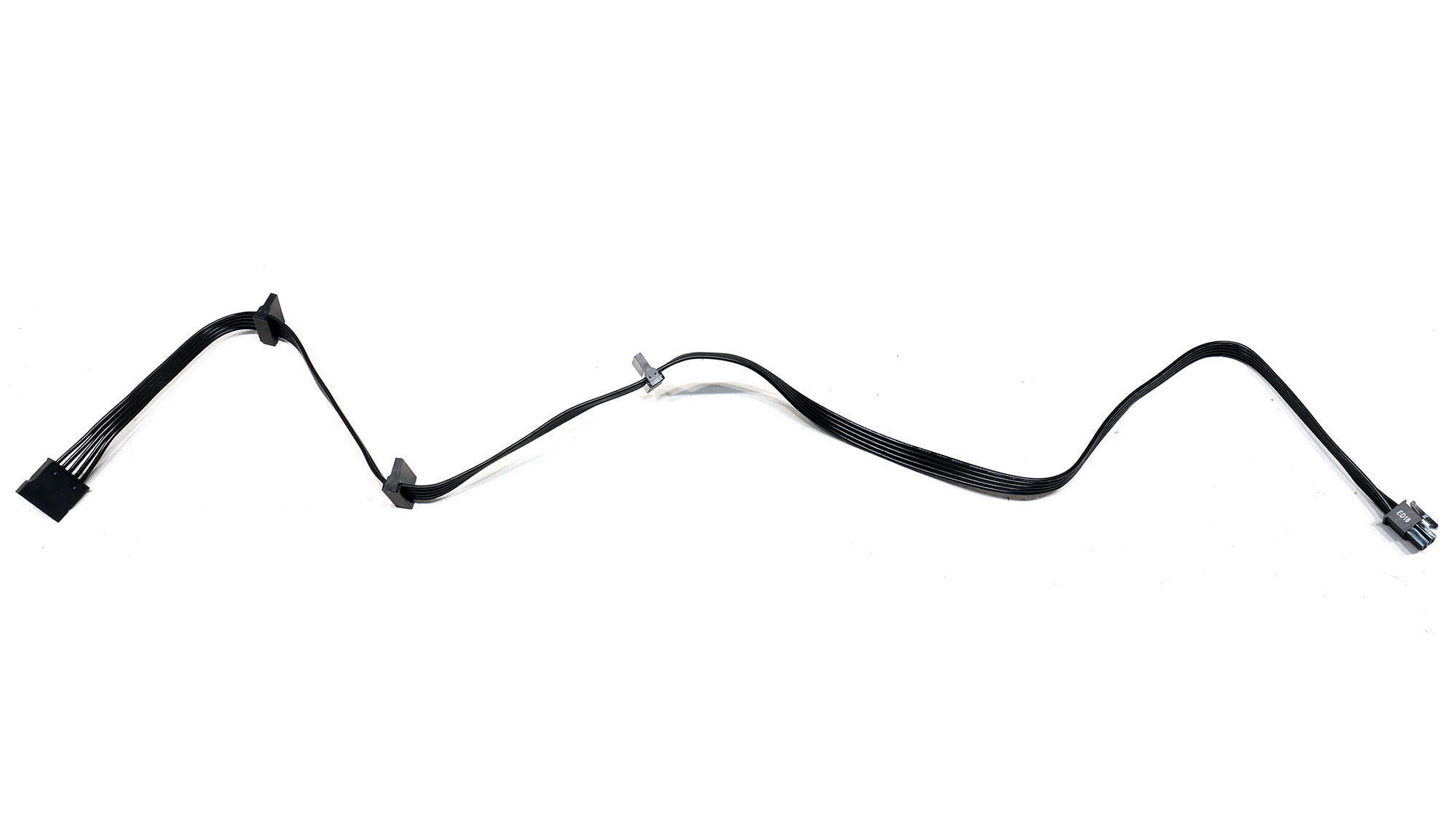

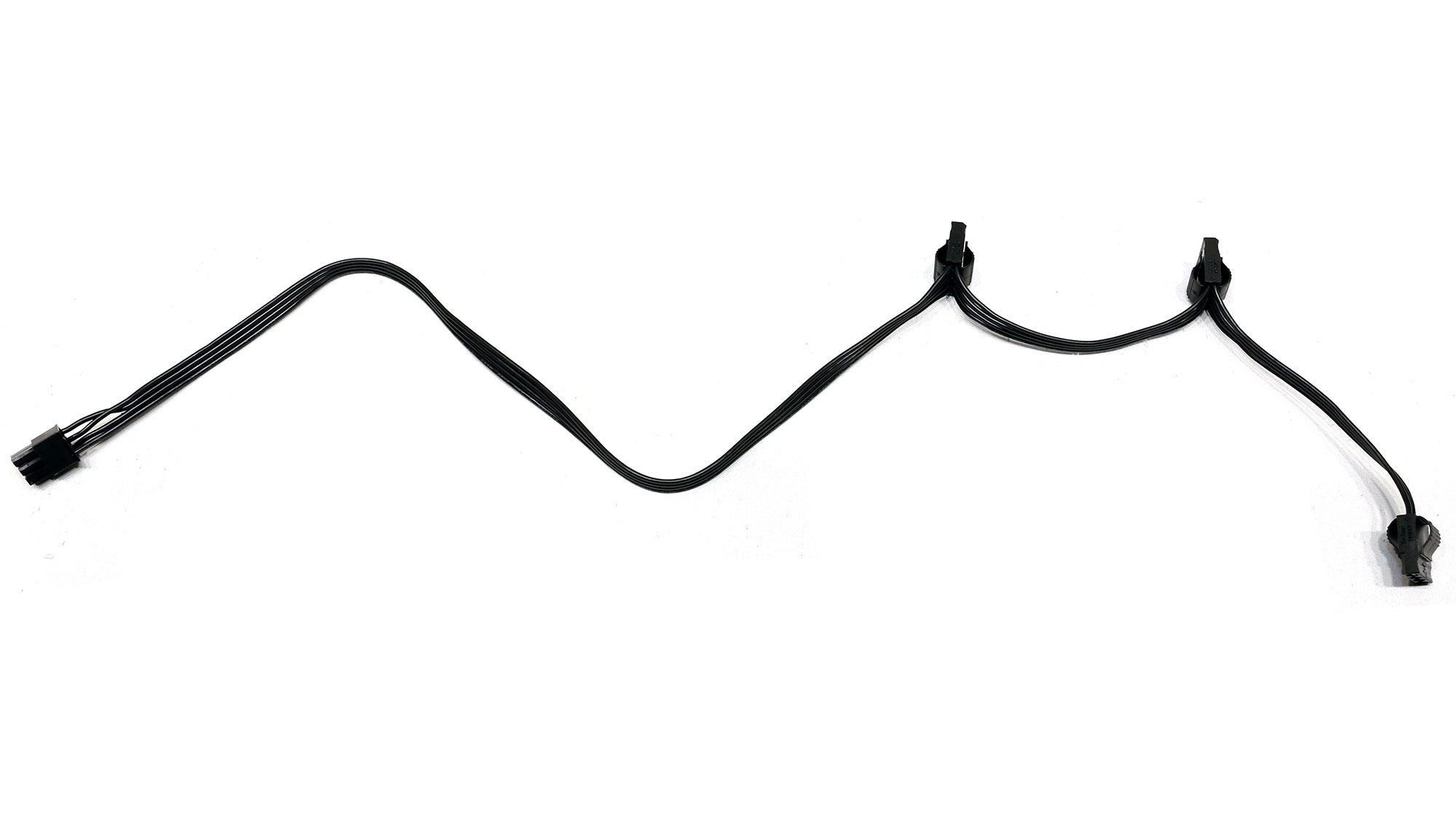
Component Analysis
We strongly encourage you to have a look at our PSUs 101 article, which provides valuable information about PSUs and their operation, allowing you to better understand the components we're about to discuss.
| General Data | - |
| Manufacturer (OEM) | Seasonic |
| PCB Type | Double Sided |
| Primary Side | - |
| Transient Filter | 4x Y caps, 2x X caps, 2x CM chokes, 1x MOV, 1x Champion CM02X (Discharge IC) |
| Inrush Protection | NTC Thermistor MF72-5D15M (5Ohm) & Relay |
| Bridge Rectifier(s) | 2x GBU1508 (800V, 15A @ 100°C) |
| APFC MOSFETs | 2x Infineon IPA60R190P6 (600V, 12.7A @ 100°C, Rds(on): 0.19Ohm) |
| APFC Boost Diode | 1x STMicronics STTH8S06D (600V, 8A) |
| Bulk Cap(s) | 1x Nippon Chemi-Con (400V, 680uF, 2,000h @ 105°C, KMR) |
| Main Switchers | 4x Great Power GPT13N50DG (500V, 13A, Rds(on): 0.49Ohm) |
| APFC Controller | Champion CM6500UNX |
| Resonant Controller | Champion CM6901T6 |
| Topology |
Primary side: APFC, Full-Bridge & LLC converter Secondary side: Synchronous Rectification & DC-DC converters |
| Secondary Side | - |
| +12V MOSFETs | 4x Nexperia PSMN2R6-40YS (40V, 100A @ 100°C, Rds(on): 2.8mOhm) |
| 5V & 3.3V | DC-DC Converter(s) |
| Filtering Capacitors |
Electrolytic: 2x Nippon Chemi-Con (105°C, W), 5x Nippon Chemi-Con (2-5,000h @ 105°C, KZE), 6x Nippon Chemi-Con (4-10,000h @ 105°C, KY) |
| Supervisor IC | Weltrend WT7527V (OCP, OVP, UVP, SCP, PG) |
| Fan Model | Hong Hua HA1225H12F-Z (120mm, 12V, 0.58A, Fluid Dynamic Bearing Fan) |
| 5VSB Circuit | - |
| Rectifier | 1x M.C.C. MBR1045ULPS SBR (45V, 10A) |
| Standby PWM Controller | Excelliance MOS EM8569C |




Deepcool utilized Seasonic's trendy Focus Plus Gold design for this series. This is a good and reliable platform but not fully compatible with the newest ATX spec. The build quality is good, and as usual, Seasonic used good parts everywhere. The heat sinks are small, and there is ample space between parts for good airflow, so the Hong Hua FDB fan won't have to work over hours.






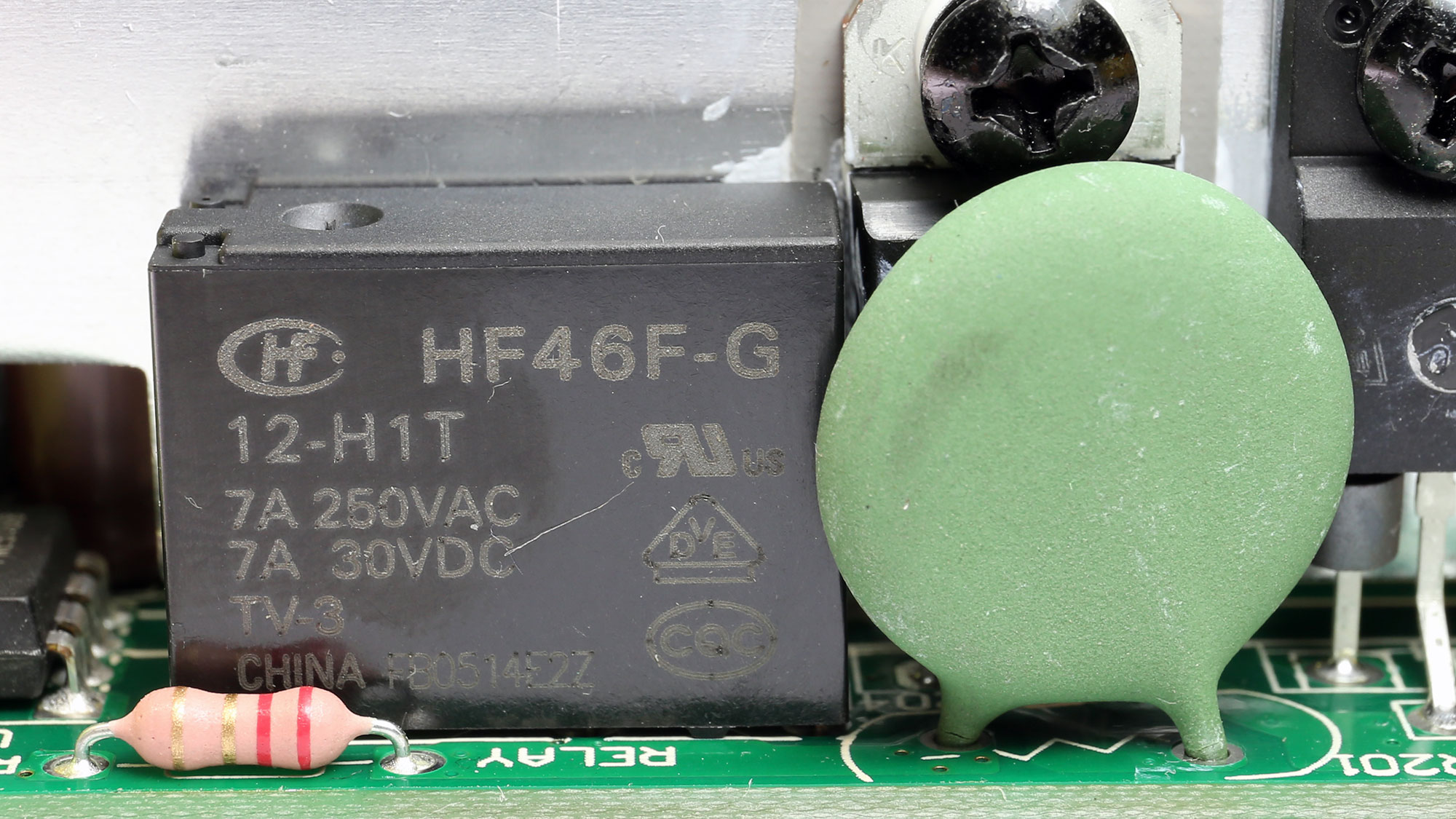
The transient/EMI filter has all necessary parts, including an MOV and a discharge IC, providing a small efficiency boost. There is also an NTC thermistor for lowering inrush currents, supported by a bypass relay.


The pair of bridge rectifiers can handle up to 30A of current.



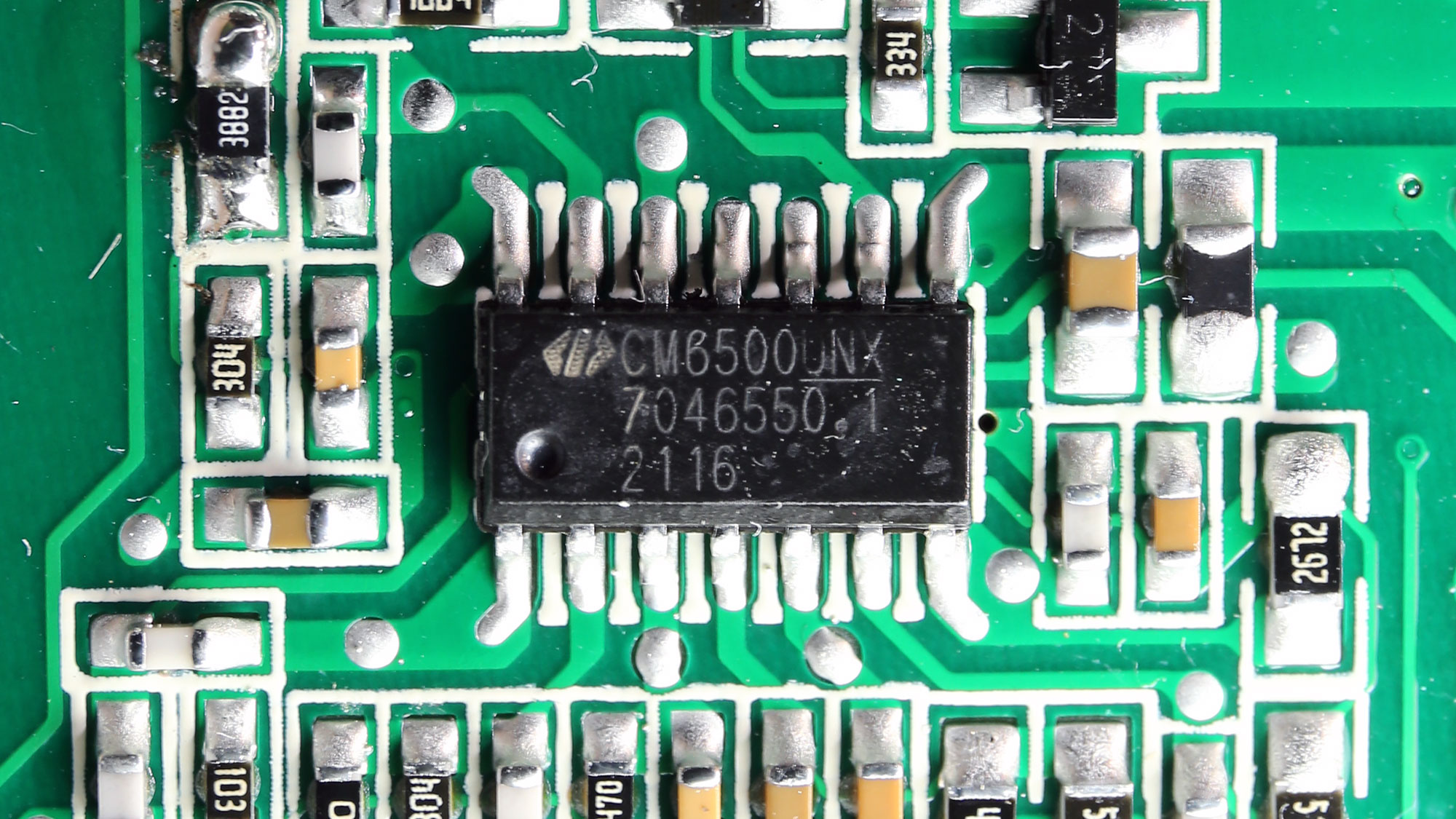
The APFC converter uses two Infineon FETs and a single boost diode provided by STMicronics. The bulk cap is by Chemi-Con, and it has enough capacity to provide a longer than 17ms hold-up time. The APFC controller is a Champion CM6500UNX.

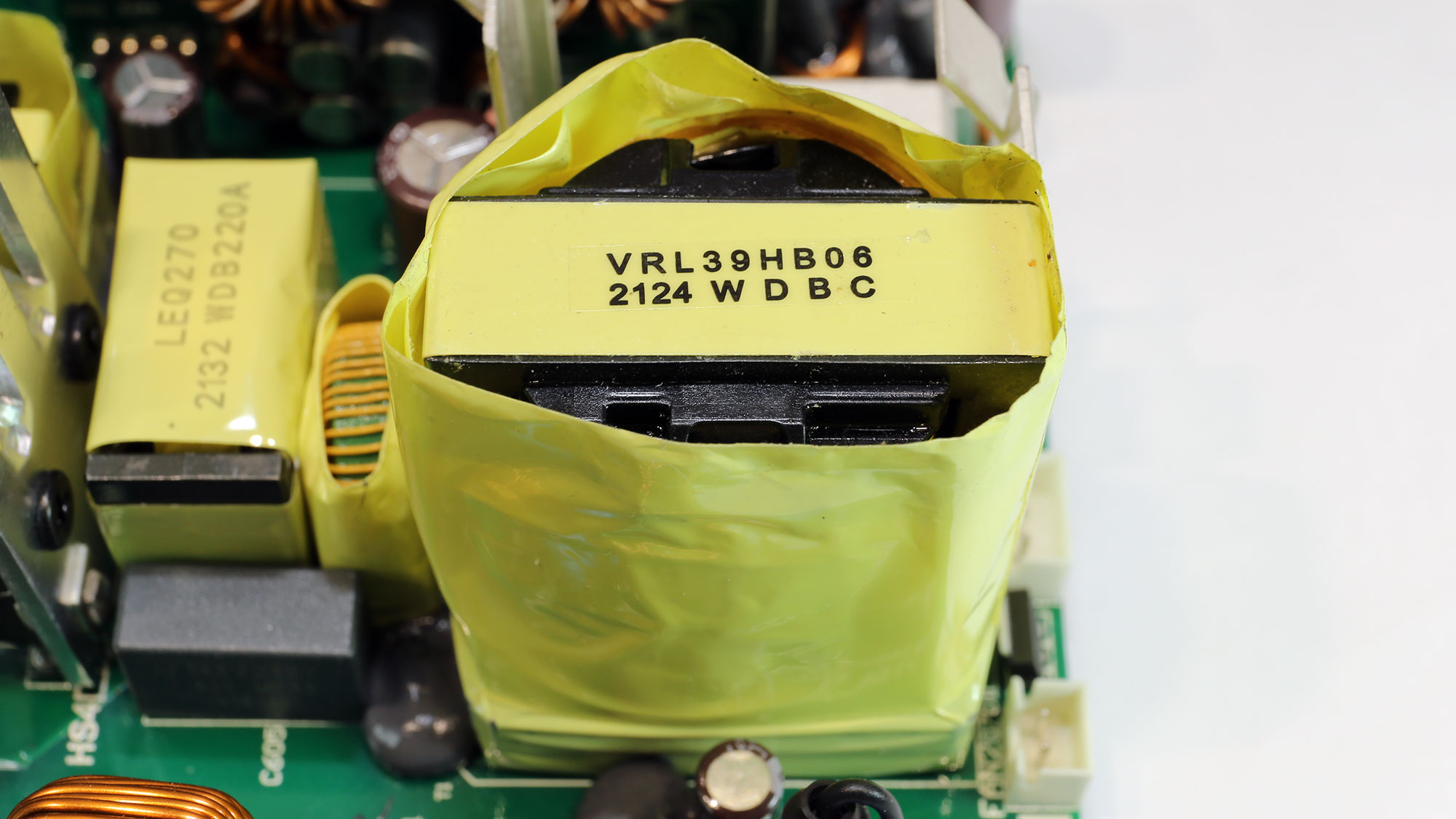


The main FETs are four Great Power, installed in a full-bridge topology. An LLC resonant converter is also used to increase efficiency. The resonant controller is a Champion CM6901T6.
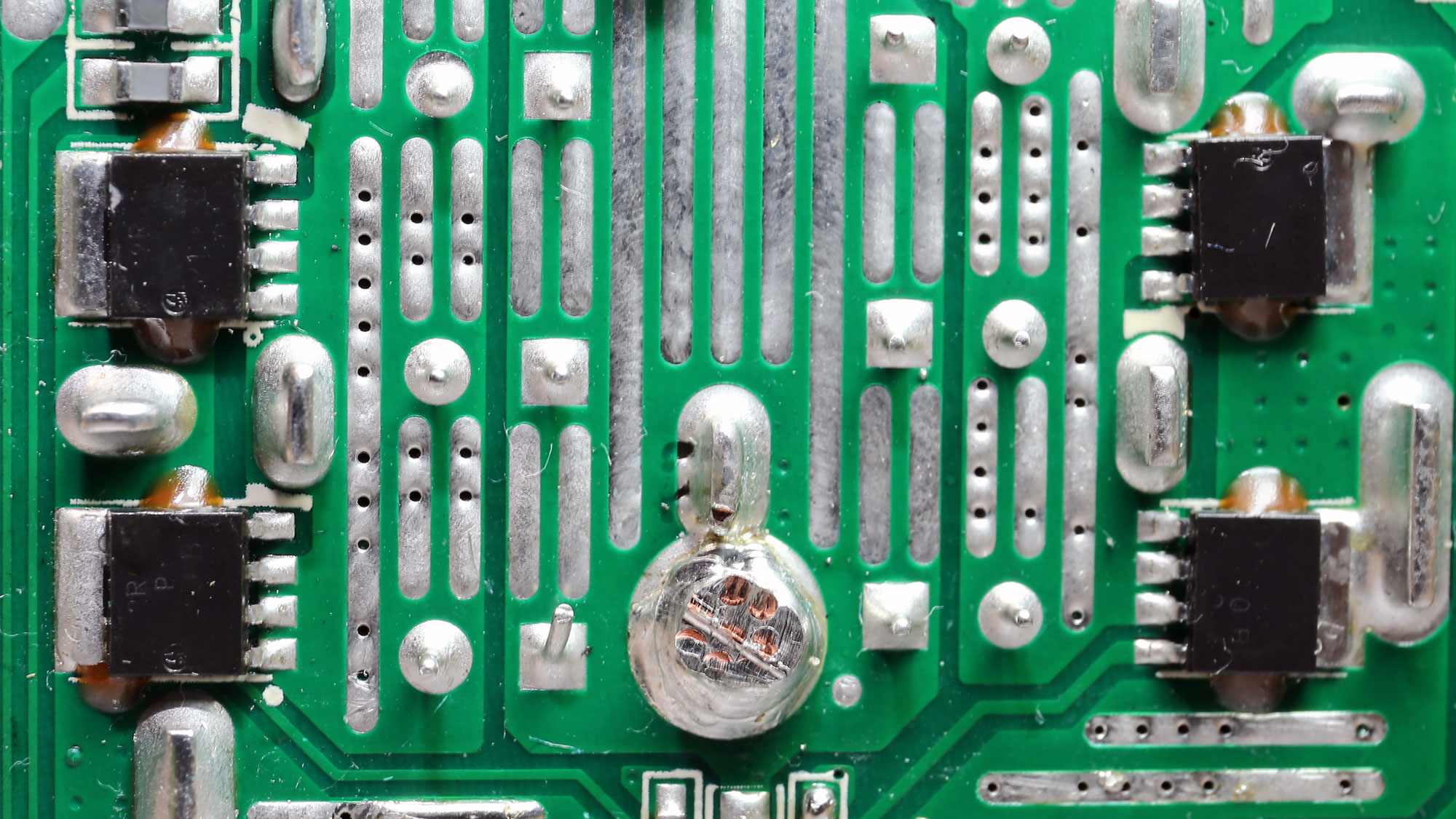



Four Nexperia FETs regulate the 12V rail. Two DC-DC converters generate the minor rails.


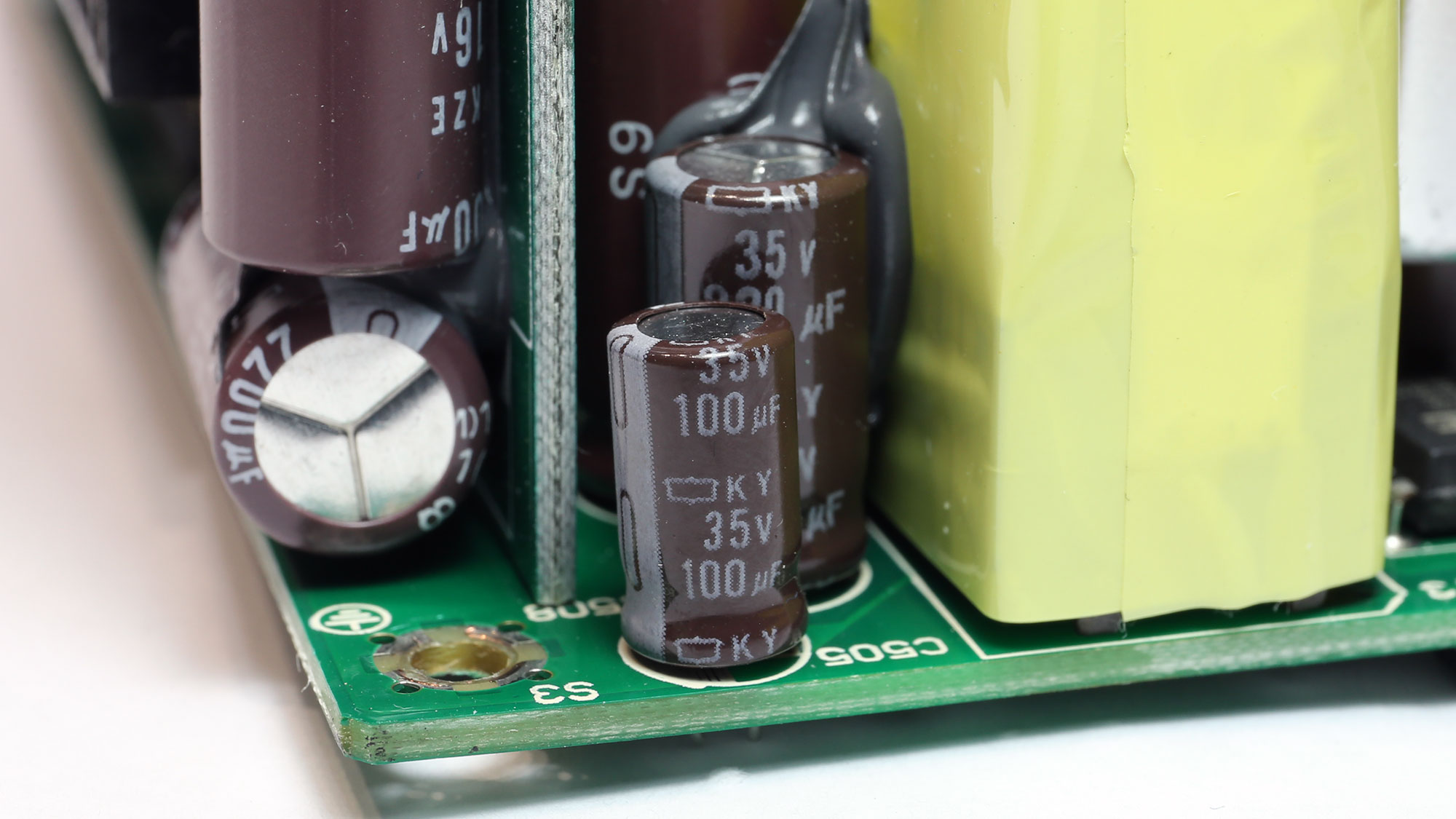
The electrolytic filtering caps are by Chemi-Con so that they will outlive the provided warranty. Lots of polymer caps are also used.


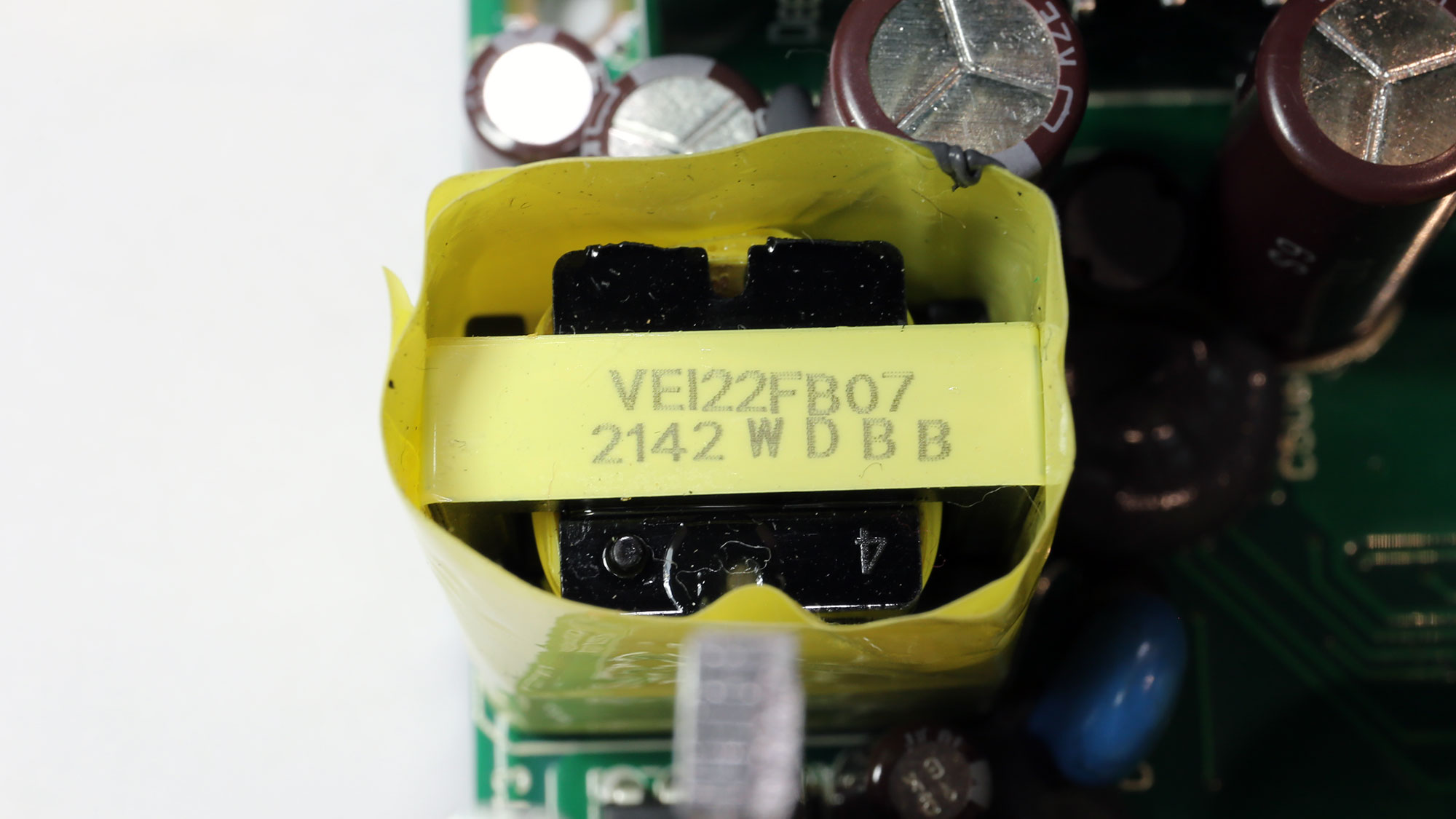
The standby PWM controller is an Excelliance MOS EM8569C.



The modular board has many polymer and two electrolytic caps.

The main supervisor IC is a Weltrend WT7527V.





Soldering quality is good.
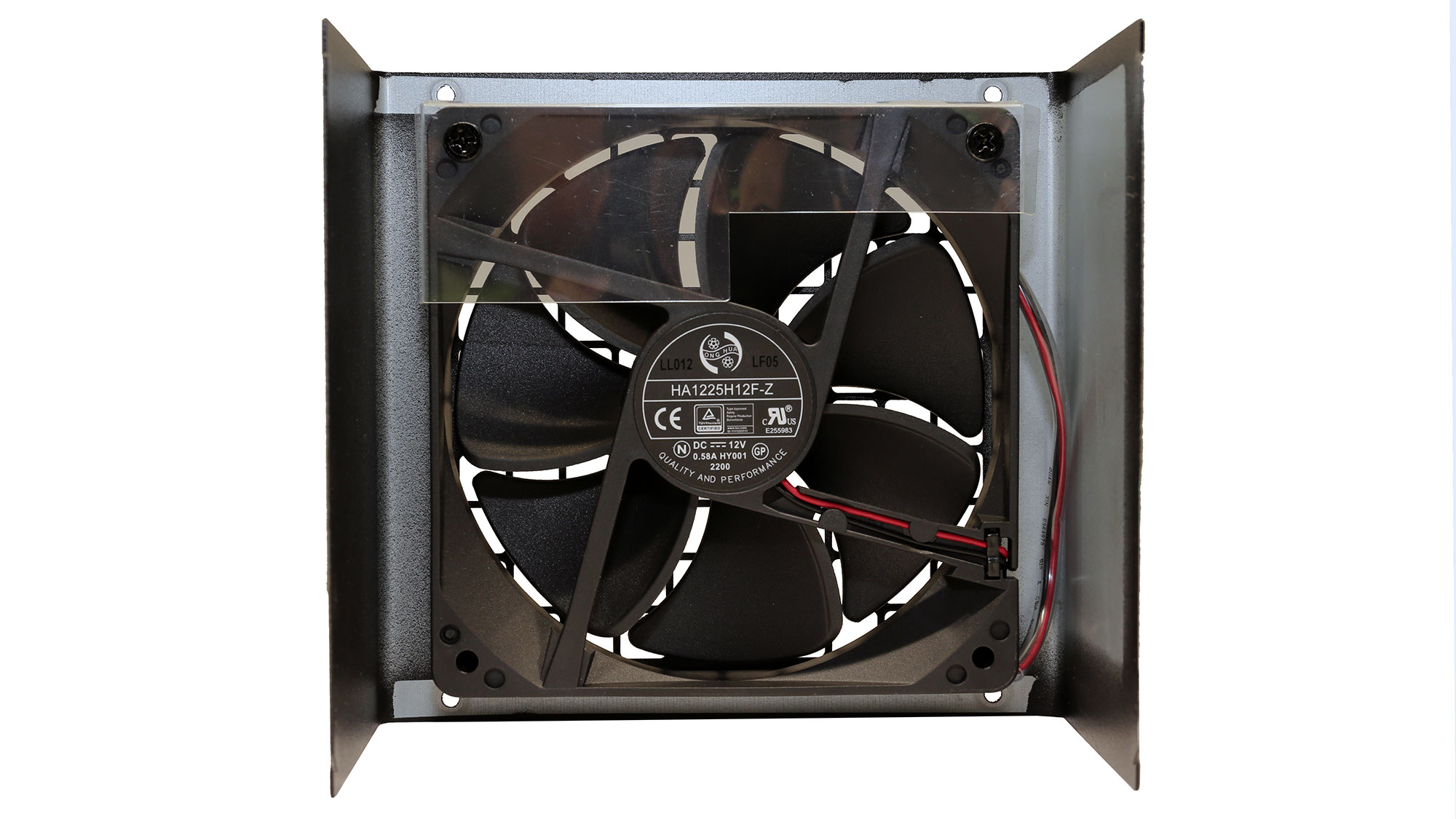

The cooling fan measures 120mm across and it uses a fluid dynamic bearing.
MORE: Best Power Supplies
MORE: How We Test Power Supplies
MORE: All Power Supply Content
Current page: Specifications and Part Analysis
Next Page Load Regulation, Hold-Up Time, Inrush & Leakage Current, Efficiency and Noise
Aris Mpitziopoulos is a contributing editor at Tom's Hardware, covering PSUs.
-
Co BIY This category seems to show all the competitors neck-and-neck. Are they all using the SeaSonic Gold Platform ?Reply
I don't mind the grid pattern and perhaps it's excellent airflow allowed for less fan.
I think it looks particularly sharp on the back. -
drajitsh It is not ideal to buy a PSU right now because we are in a transition phase from the previous ATX spec to the new one. I am likely going to be forced to buy 2 systems for my office. They will have integrated graphics to start with and will be upgraded to low end discrete graphics in 1-2 years. Does your recommendation still stand?Reply -
Co BIY Replydrajitsh said:It is not ideal to buy a PSU right now because we are in a transition phase from the previous ATX spec to the new one. I am likely going to be forced to buy 2 systems for my office. They will have integrated graphics to start with and will be upgraded to low end discrete graphics in 1-2 years. Does your recommendation still stand?
I don't think low end cards will be requiring the new connectors in the short term. This is a necessity only for the high end cards with crazy peak power draws.
The makers of the low end cards will also build them to match the likely customer , you and the other 500 million people running machines without the ATX3.0 PSU upgrades.
Question: Why are PSU's built with fan grills ? None of the other fans in PCs have grills and PSU fans aren't bigger or faster . Also readily replaceable fans could be a great selling point because users want to mod. -
Co BIY ReplyTom Sunday said:The old story...eveyone wants a piece of the pie! Deepcool once dedicated exclusively for PC cooling now into PSU's as well. Next we have Seasonic making memory. I wish that companies would perfect their originally intended product line and giving us those results, instead of just plastering their nane on products made by others. I have no respect for this as it is a quick fix to make more money and even having some people believe that they have a better product when this is absolutely not the case .
I agree with you if they just slap their "Premium" name and a few RGB's to something of below average quality and then throw it out there at a Premium price.
In this case they started with a very solid platform, executed it competently and it delivers the goods quietly.
This PSU doesn't seem like it's worth getting the pitchforks out for. -
Co BIY ReplyTom Sunday said:Yes you are on the point as always!
Thank You for the compliment!
Tom Sunday said:My other 'Deepcool' thought and great hope was that someday perhaps air-cooling products will equal the thermal performance of AIO’s. In part many users even with extensive experience sometimes have trouble installing AIO’s into their case.
I agree with you that the simplicity, reliability and cost advantages of air cooling justify continued development. Lenovo has an interesting offset stacked air cooler design on their new Threadripper workstations that I would like to see make it to the DIY market .
Lenovo Thinkstation P620 Review (at Anandtech)